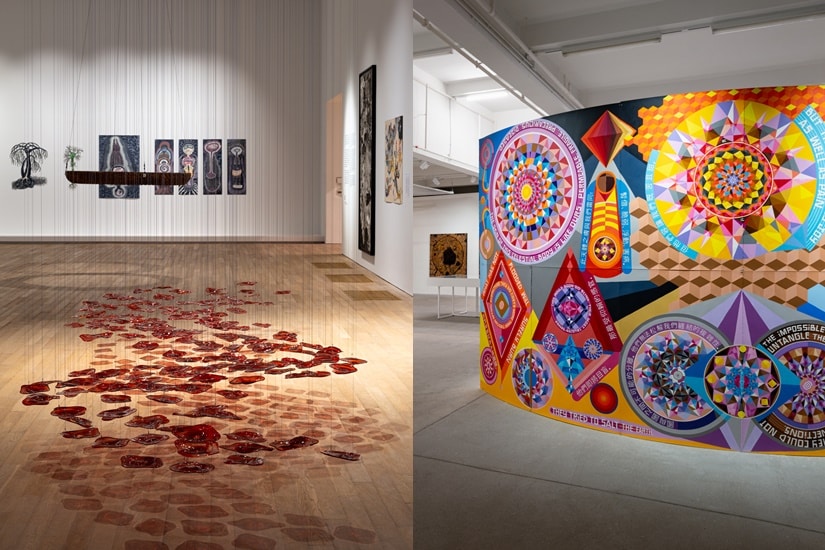The global temperature continues to rise, which has not only raised concerns in the environmental community but has also become a subject of exploration for artists. The latest group exhibition at Tai Kwun Contemporary, “Green Snake: Ecology at the Intersection of Women,” focuses on the connection between art and ecology. It brings together over 30 artists and art collectives from more than 20 countries, showcasing over 60 works that reframe narratives centered around women through the artists’ perspectives.

When it comes to “Green Snake,” everyone will immediately associate it with the snake sisters White Snake and Green Snake from the ancient Chinese legend “The Legend of the White Snake,” and Green Snake highlights female power in the story. “Green Snake” also appears in myths from different cultures around the world, such as snake-like beings with the ability to transform and regenerate, and on the other hand, the winding curves of a snake are full of vitality, like rivers flowing through the earth.

The various works of “Green Snake: Feminine-Centered Ecology” start from myths and worldviews centered around women, engaging in dialogue with each other to explore the possibilities of other ecological relationships and imagine alternative futures. The exhibition directly addresses the harm caused by extractive economies that lead to ecological crises, revealing how nature is seen as a resource to be exploited at will. It points out that the single pursuit of profit and growth only leads to destruction, spreading toxins and pollution, ultimately resulting in the collapse of ecosystems and exacerbating climate change.

Many exhibiting artists are exploring the history of destruction and exploitation of nature around the world, while others are particularly concerned with marginalized or suppressed knowledge systems. However, “青蛇” does not aim to present a bleak dystopian viewpoint, but rather to question how artists can celebrate and appreciate the boundless power of the natural world while reflecting on how to prioritize care, value human relationships, and the relationship with nature. Like a coiled snake, the intertwined circle symbolizes empathy and care, coiling up like a snake, with the interconnected circle representing the inclusiveness of planets and the universe.

When entering the exercise yard of Tai Kwun Prison, viewers will first see “MIKA: Eight Temples” created by Youssef Agbo-Ola and Tabita Reisel. Its shape is derived from the cellular structure of microorganisms and plant roots in the soil, and some of the inspiration also comes from the anatomy of the human lungs and plants. The artwork celebrates the shared diurnal rhythm and biological morphology of plants and humans, as well as the resonant energy that arises from the unconscious level. Symbolically, it invites viewers to embark on a journey of Earth’s creation, traversing its vast and ever-changing epochs.

As for Anne Laida Chapiro’s watercolor and paper-cut works, they are meticulously composed of circular small holes drawn with ink and graphite, echoing the acupuncture technique of needle insertion in traditional Chinese medicine. Some of her works intertwine various organs with celestial bodies and the nervous system, transforming into a marvelous landscape of the human body, the earth, and the heavens. Lona Amira’s works draw inspiration from spiritual practices in South African culture, creating a healing space connected to the earth, ancestors, and surrounding spirits. Viewers can pass through a beaded curtain and enter the installation artwork, standing on a healing salt bed while listening to music, deepening their connection with all things.

“Green Snake: Feminine-Centric Ecology” Exhibition
Date: December 20th to April 1st, 2024
Location: Tai Kwun Contemporary
Image source: Tai Kwun
Further reading:
- Atsuro Tayama collaborates with French painter Raoul Dufy, bringing landscape paintings into the wardrobe
- Hong Kong artist Felix Chan collaborates with Tom Dixon! Together they create The Angel Tree, illuminating Upper House for Christmas
- New York artist Alexandria Smith’s first solo exhibition in Asia, exploring the diverse nature of self and identity

